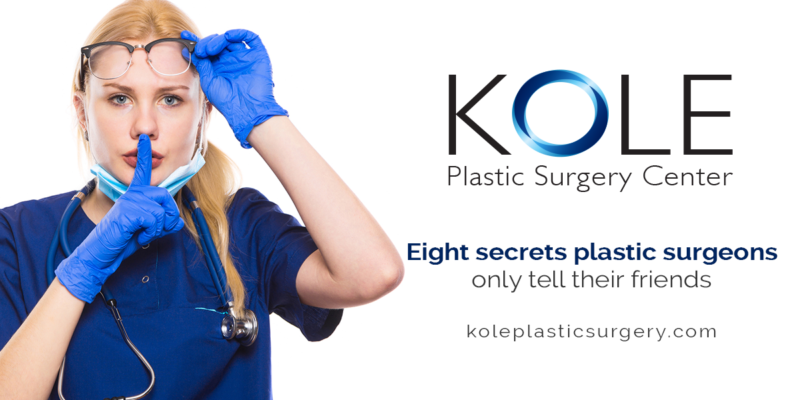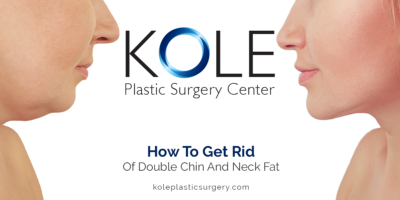Can Men Get Six-Pack Abs with Lipo?
Can Liposuction Help You Get Chiseled Abs? Undergoing plastic surgery was once considered something that only women did, but this has been changing over the
Can Liposuction Help You Get Chiseled Abs? Undergoing plastic surgery was once considered something that only women did, but this has been changing over the
Preparing for Body Contouring Surgery After Weight Loss At the Kole Plastic Surgery Center in Bucks County, we know that few things bring more satisfaction

People often make the mistake of assuming that issues with body image are solely for women. That couldn’t be further from the truth, however. There
What is Hyperpigmentation? It’s hard to overlook the importance of our skin when it comes to our appearance. The saying that “beauty is only skin

All people have varying opinions of how strangers look when they’re in public. Some people think positively of a person’s appearance while others think negatively
If you’re a woman who desires smaller breast, you’re not alone. There have been more than 112,000 breast reduction surgeries performed in the United States

At the Kole Plastic Surgery Center, we know there are few things more exhilarating than the feeling you get after successfully losing a lot of

A few decades ago, people thought that breast implants were fairly safe until women started getting serious complications. Then, the FDA changed regulations as to

A double chin is relatively easy to remove with surgery alone. But liposuction is not the only fat removal procedure out there. There are alternative
Body contouring and body sculpting in Philadelphia are cosmetic procedures that help to get the underlying tissue reshaped and can also remove extra body fat.
Take advantage of great savings each month on a variety of services and procedures to make it easier to find your new look.
If you need more information, please feel free to call our offices, or use our contact form to schedule a Complimentary Consultation with Dr. Edward Kole.
Schedule a Complimentary Consultation
Kole Plastic Surgery ©2005-2025. All Rights Reserved

215-315-7655
Kole Plastic Surgery Center
We firmly believe that the internet should be available and accessible to anyone, and are committed to providing a website that is accessible to the widest possible audience, regardless of circumstance and ability.
To fulfill this, we aim to adhere as strictly as possible to the World Wide Web Consortium’s (W3C) Web Content Accessibility Guidelines 2.1 (WCAG 2.1) at the AA level. These guidelines explain how to make web content accessible to people with a wide array of disabilities. Complying with those guidelines helps us ensure that the website is accessible to all people: blind people, people with motor impairments, visual impairment, cognitive disabilities, and more.
This website utilizes various technologies that are meant to make it as accessible as possible at all times. We utilize an accessibility interface that allows persons with specific disabilities to adjust the website’s UI (user interface) and design it to their personal needs.
Additionally, the website utilizes an AI-based application that runs in the background and optimizes its accessibility level constantly. This application remediates the website’s HTML, adapts Its functionality and behavior for screen-readers used by the blind users, and for keyboard functions used by individuals with motor impairments.
If you’ve found a malfunction or have ideas for improvement, we’ll be happy to hear from you. You can reach out to the website’s operators by using the following email
Our website implements the ARIA attributes (Accessible Rich Internet Applications) technique, alongside various different behavioral changes, to ensure blind users visiting with screen-readers are able to read, comprehend, and enjoy the website’s functions. As soon as a user with a screen-reader enters your site, they immediately receive a prompt to enter the Screen-Reader Profile so they can browse and operate your site effectively. Here’s how our website covers some of the most important screen-reader requirements, alongside console screenshots of code examples:
Screen-reader optimization: we run a background process that learns the website’s components from top to bottom, to ensure ongoing compliance even when updating the website. In this process, we provide screen-readers with meaningful data using the ARIA set of attributes. For example, we provide accurate form labels; descriptions for actionable icons (social media icons, search icons, cart icons, etc.); validation guidance for form inputs; element roles such as buttons, menus, modal dialogues (popups), and others. Additionally, the background process scans all the website’s images and provides an accurate and meaningful image-object-recognition-based description as an ALT (alternate text) tag for images that are not described. It will also extract texts that are embedded within the image, using an OCR (optical character recognition) technology. To turn on screen-reader adjustments at any time, users need only to press the Alt+1 keyboard combination. Screen-reader users also get automatic announcements to turn the Screen-reader mode on as soon as they enter the website.
These adjustments are compatible with all popular screen readers, including JAWS and NVDA.
Keyboard navigation optimization: The background process also adjusts the website’s HTML, and adds various behaviors using JavaScript code to make the website operable by the keyboard. This includes the ability to navigate the website using the Tab and Shift+Tab keys, operate dropdowns with the arrow keys, close them with Esc, trigger buttons and links using the Enter key, navigate between radio and checkbox elements using the arrow keys, and fill them in with the Spacebar or Enter key.Additionally, keyboard users will find quick-navigation and content-skip menus, available at any time by clicking Alt+1, or as the first elements of the site while navigating with the keyboard. The background process also handles triggered popups by moving the keyboard focus towards them as soon as they appear, and not allow the focus drift outside it.
Users can also use shortcuts such as “M” (menus), “H” (headings), “F” (forms), “B” (buttons), and “G” (graphics) to jump to specific elements.
We aim to support the widest array of browsers and assistive technologies as possible, so our users can choose the best fitting tools for them, with as few limitations as possible. Therefore, we have worked very hard to be able to support all major systems that comprise over 95% of the user market share including Google Chrome, Mozilla Firefox, Apple Safari, Opera and Microsoft Edge, JAWS and NVDA (screen readers).
Despite our very best efforts to allow anybody to adjust the website to their needs. There may still be pages or sections that are not fully accessible, are in the process of becoming accessible, or are lacking an adequate technological solution to make them accessible. Still, we are continually improving our accessibility, adding, updating and improving its options and features, and developing and adopting new technologies. All this is meant to reach the optimal level of accessibility, following technological advancements. For any assistance, please reach out to